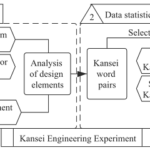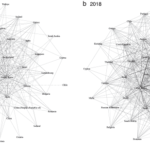
In the ever-evolving landscape of innovation, a fundamental debate persists: do ingenious minds drive innovation, or is it the clever orchestration of institutions that propels progress? While prevailing theories explore dynamics at the population level, the individual-centric paradigm remains relatively unexplored.
While population models have demonstrated that factors such as population size, connectivity, and agent behavior are crucial for innovation, few have taken the individual-central approach seriously by examining the role individuals play within their groups.
In this context, researchers from the University of California and Stanford University explored the nexus between innovation, individual contributions, and network structures, using an agent-based model of the ‘Potions Task,’ a unique lens to examine the interaction between individuals and their collaborative networks.
They explored how size, connectivity, and rates of information exchange in a network influence innovation and how these factors impact the emergence of inequality in terms of agent contributions.
Potions Task
The game called the ‘Potions Task‘ was introduced by Derex and Boyd (2016) to investigate the link between cumulative innovations, group structure, and the pathway of dependence using a real-world behavioral experiment.
Researchers used the ‘Potions Task’ to model factors facilitating innovation in groups and to study how these factors are related to individual agents’ contributions to group performance and inequality.
Population Dynamics
Historically, theories have emphasized factors such as population size, connectivity, and agent behavior as fundamental to fostering innovation. The study aligns with previous findings, asserting that population size indeed positively influences innovation.
However, the revelation that both large and small populations exhibit comparable per capita performance challenges conventional wisdom, suggesting that many small groups outperform fewer large groups; random changes in structure have minimal effects on innovation in the task, and high-performing agents tend to occupy more central positions in the network.
Structural Resilience
Interestingly, the study’s results reveal that random alterations to the network structure produce minimal effects on innovation within the task. This underscores the resilience of collaborative networks, emphasizing their adaptability to structural changes.
Individual Positions in Networks
A compelling finding emerges when examining the positions of high-performing agents within networks. The study indicates that the most successful contributors tend to occupy central positions within the network—a phenomenon observed in both idealized models and real-world networks. This sheds light on the fundamental role of network centrality in fostering individual brilliance.”
Inequality and ‘Genius Effects’
As researchers unravel the intricate dance of innovation, a notable trend emerges: every factor that enhances innovation also contributes to a proportional increase in performance inequality within the network. This phenomenon, termed ‘genius effects,’ illustrates how seemingly ‘dumb’ agents can achieve brilliance within a network, underscoring the nuanced dynamics of innovation.
“Our findings highlight how network structures that underpin innovation and collective problem-solving also create inequality among individuals within the networks,” report the researchers.
They also note that larger networks, less-connected networks, more clique-like networks, and networks that restrict information diffusion improved collective performance in these tasks but created uneven benefits for the population.
Conclusion
In the grand tapestry of innovation, the study reinforces the multifaceted nature of progress. Beyond the dichotomy between smart individuals and smart institutions, the interplay between population dynamics, network structures, and individual positions reveals a rich panorama of influences.
“Our research indicates that collective organizational and communication properties that facilitate innovation also foster greater heterogeneity of work within these groups,” conclude the researchers.
They also highlight that this heterogeneity suggests that even in a population entirely composed of ‘dumb’ agents, ‘genius effects’ can emerge more strongly in some agents than in others.
As we navigate the labyrinth of innovation, understanding the intricate dance between individuals and networks becomes paramount: a key to unlocking the true potential of collaborative brilliance in both idealized models and real-world networks shaping our collective future.
In this regard, the researchers conclude that the study’s findings demonstrate that network factors giving rise to innovation also give rise to performance inequality. However, they recommend further research on agent-level outcomes in network tasks.
The study was funded by the Humane Studies Fellowship and the Templeton World Charity Foundation.
Contact
Cody Moser
Department of Cognitive and Information Sciences
University of California
Merced, CA 95343, USA
Email: cmoser2@ucmerced.edu
Reference (open access)
Moser Cody and Smaldino Paul E. 2023. Innovation-facilitating networks create inequality. Proc. R. Soc. B.2902023228120232281 https://doi.org/10.1098/rspb.2023.2281





